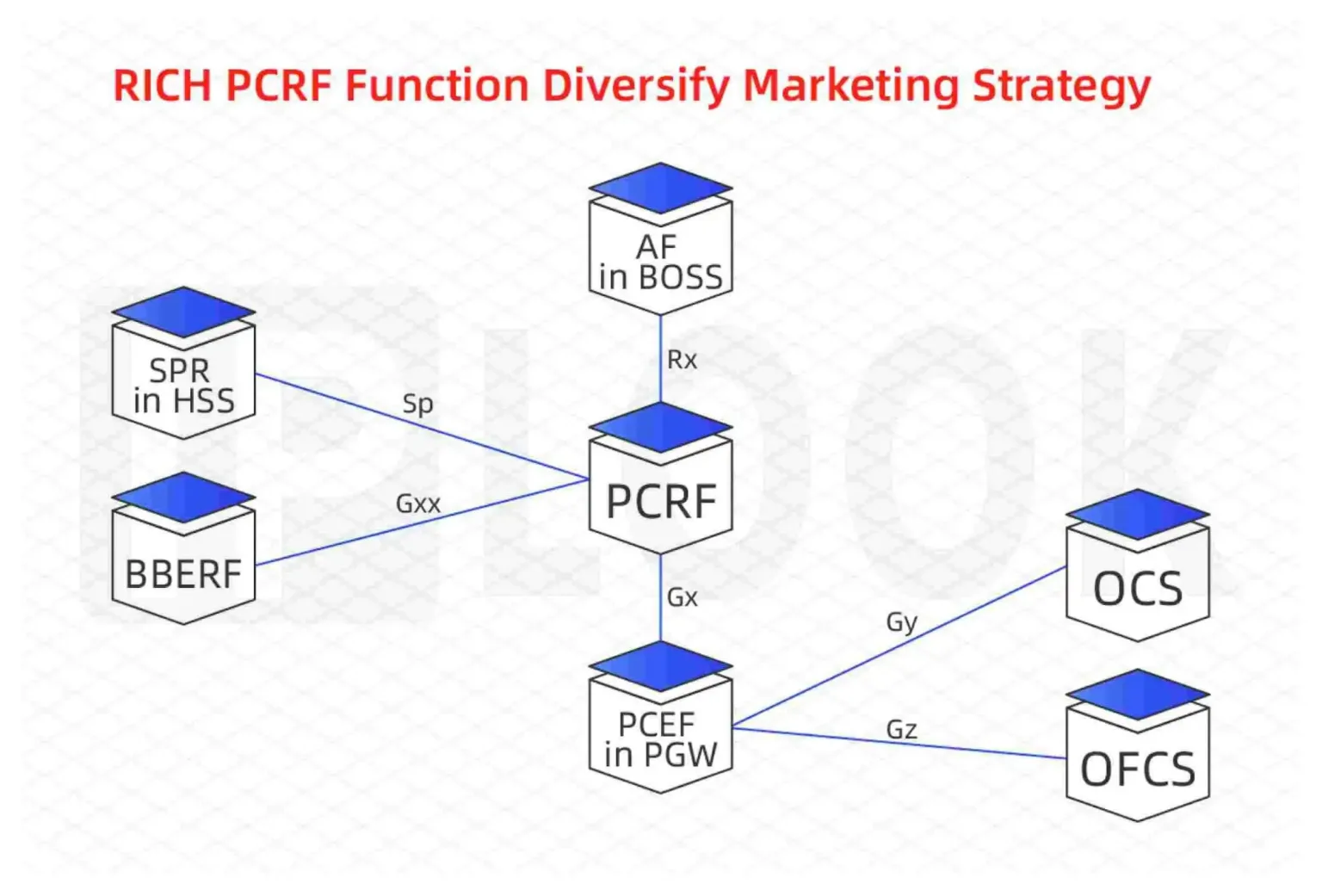Our High-Performing Core Network
Fully virtualizable on VMware, K8S, Docker and OpenStack containers
Policy and Charging Rules Function(PCRF)
Policy and Charging Rules Function (PCRF), is the part of the Evolved Packet Core (EPC) that supports service data flow detection, policy enforcement and flow-based charging. It offers a comprehensive solution that enables a new generation service provider to offer multiple use cases that allow them to better control their services and align their revenue with their resources.
Key Benefits

Distributed structure Modular design

In-memory data management Multi-level data backup

Flexible strategy control abilities

Seamless geographic redundancy solution

Large capacity and high degree of integration

Opening data access interfaces

Fully integration of fixed and mobile services

BE(End Back) and FE(End Front) Separation
IPLOOK's Virtualized PCRF Generate higher revenue on fixed and mobile networks
- IPLOOK PCRF determines the allowed traffic types in real-time. It also checks how to account for the traffic. Operators use this information for billing purpose.
- The User Data and Server Process of IPLOOK PCRF are separated to BE (End Back, subscriber data storage and operations) and FE (End Front, process the signal and service logic).
- IPLOOK can provide a fully integrated of fixed and mobile networks PCRF solution which helps in creating a lucrative and innovative platform for operators. PCRF can also be integrated with different platforms like billing, rating, charging, and subscriber database or can also be deployed as a standalone entity.
▫ Rich data, voice and SMS service
▫ Support group short number service for enterprise
Features
SPR Data Management
- SPR supports remote disaster recovery
- SPR Network element configuration Management
- SPR user and subscription information storage and management
- SPR supports restful Service configuration and user signing Interface
Dynamic policy control
- Dynamic Policy Control based on APN
- Dynamic Policy Control based on usage
- Dynamic Policy Control based on time period
- Dynamic Policy Control based on Service area
- Dynamic Policy Control based on shared usage
- Dynamic Policy Control based on Terminal Type
High performance Policy Engine
- Overload control function
- Multiple PCEF access support
- PCRF redundant backup Design
- Subscriber area roaming restriction
- PCRF Network element Fault alarm report
Modular design
- PDI:PCRF Diameter Interface
- PSC:PCRF Session Control
- PPC:PCRF Policy Control
- DRU:Data routing unit
- DPU:Data Processing unit
- PE:Policy Engine
- DSG:Data Service Gateway
- DBMS:Data Base Management System
Interface comply to 3GPP R13 release
- Rx: between the PCRF and IMS
- Gx: between the PCRF and PGW, allowing the PCRF direct control over the policy enforcement functions of the PGW
Operation and Management
- Web Client
- OMC Client
- Open Northbound interface and graphical web based management interface









